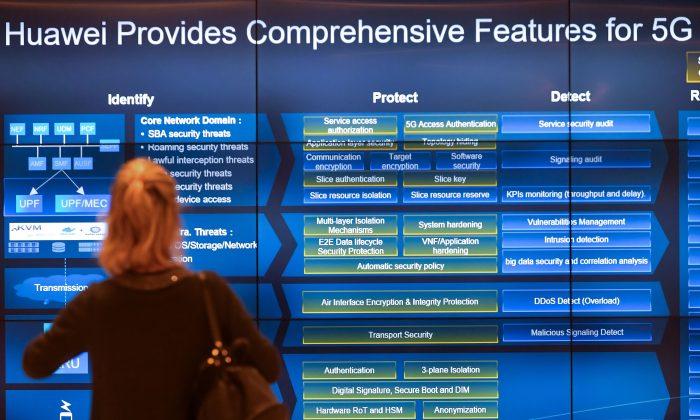Two weeks after the GigaOm Conference on Structure Data in New York, Gerstein Fisher held its annual Real Talk series. The subject of the investment management firm’s lecture followed GigaOm’s footsteps, as if by design.
“Knowledge Redefined: How Technology is Changing the Way We Learn, What We Know, and How We Invest,” centered on the lecture of David Weinberger, a Harvard researcher and bestselling author.
After Weinberger showed a pyramid with four levels of intelligence—data, information, knowledge, and wisdom at the top—to the packed Times Center auditorium, he went on a fast-paced tear explaining the eccentricities, broken paradigms, and counter-intuitive insights into three of the four levels.
He punted on the fourth giving up trying to explain, “What is wisdom?”
Like the CIA and its CTO Gus Hunt at the GigaOm Conference, Mr. Weinberger claimed that we should be collecting everything with respect to data. “We are living in a time of inclusion, not curating data. Today, we filter on the way out.”
He went on to give an example that even data of reality TV shows on celebrities should be gathered, as what might be thought of nonsense one day, became a Harvard course on celebrities and their influence on fashion and culture last semester.
“Order doesn’t scale in the big data era,” he said. “Rows and columns don’t scale. Agreements don’t scale.” Weinberger went through a few, often funny, examples of how humans always agree to disagree. “But messy data does scale. It gives meaning.”
In mashing up all kinds of data, from polar opposite categories to data sets of different variety, velocity, and volume, the Harvard researcher drove home his point that we should no longer be excluding (censoring) data, but collecting all of it. As Mr. Hunt said at the GigaOm Conference, the CIA will collect and keep all its data storing it in a $600 million Amazon cloud to enable the intelligence agency “to connect the dots” in some unforeseen way for future events.
[Recommended: The CIA Bets All in the Cloud, an ‘Intelligent’ Move]
So how do we make sense of all the terabytes (TB) and petabytes of data that different companies, institutions, and industries are collecting and storing in the cloud today?
A Beacon into Making ‘Sense’ of Big Data
At the same GigaOm Conference, I came across the answer: SiSense.
In meeting Bruno Aziza, vice president of marketing at SiSense, I found an energetic man excited about the future of data. He believed that his firm, which just closed a $10 million Series B investment with Battery Ventures, has engineered the road out of the dark void of messy data.
Prism™, SiSense’s flagship business intelligence (BI) software, is a technology that reinforces both the company’s mantra—“You Don’t Have to be a Data Scientist” to mine big data—and the 10x10x10 challenge for analytics.
Last month, SiSense partnered with AOL to make sense of a decade worth of stored big data in the CrunchBase ecosystem of venture capital and technology startups for free.
In test-driving a demo of CrunchBase through Prism™, Mr. Aziza showed the average investment by round for various startups, from mobile to cloud computing. He pulled up different tables, joined them together, then ran the analytics without typing a single key.
“It’s very simple to use,” he said. “Call up pivot tables, index them. Ask if you want to count it. Auto-create and aggregate the data. With other solutions, when users make changes along the way accumulating evermore data, things breakdown. But that’s when SiSense gets smarter.”
Once users have the data, they want it in a simple, visual way. “They can share it, export it, publish it, and schedule distribution,” Aziza said. “Using CrunchBase, people can mine fifty tables joined from different sources and different systems.
Not only is the BI software useful, but also its user-friendly as all this non-coder had to do was use a laptop glidepad to pull up data and join the tables.
SiSense’s 10x10x10 challenge: “10 TB of data in 10 seconds on a $10K machine.”
Without the heavy investment in legacy systems, SiSense has made the world of messy data accessible and affordable to the small-to-medium sizes businesses.
Interview with CEO Amit Bendov
In a follow up interview with SiSense CEO Amit Bendov, he made the point that his firm has solved the “Tower of Babel” problem of BI and data analytics of different software programs that don’t speak to one another, conflicting pivot tables, and big untenable data. What seemed impossible—at least for a reasonable price—to “pull” key data from vast oceans and warehouses of unrelated data in 2012 appears to have turned the corner this year.
“Launching Prism last October, we set out to make data analytics simple with what feels like a monster of complicated models that cost millions to crunch and do it at a fraction of the cost,” Bendov said. Probably in a fraction of the time, too.
SiSense’s co-founders, Chief Product Officer Elad Israeli and CTO Eldad Farkash, both veterans of Israel’s technology hub, started developing the BI software many years ago.
To put that database analytics model into commercial use, Amit Bendov came on board to accelerate growth of the company: “A couple of years ago our growth soared from 300% to 520% last year. We have been very aggressive in achieving our goals and currently we are one month ahead of our latest milestone,” he said.
“We are in high demand to keep support people in New York City, where we will soon open a regional office. Our client-base there is growing tremendously as we offer unmatched power, speed, and simplicity compared to IBM, HP, and Oracle. We do a different job than they do. They’re very complicated for non-technical people, who can’t handle big data or computer storage. Our product is revolutionary,” Bendov said.
“Who are your competitors?” I asked.
Without hesitation, Amit Bendov replied, “They are the lower end solutions, from Tableau (which just announced an IPO) to other ediscovery tools and software like Qliktech. We are cheaper to use. But the critical difference, the more users and larger portions of data in a database, the smarter Prism works.”
Machine learning isn’t new, but for big data that’s hard to manage and impossible to pull key analytics easily and at a low cost, this could be an inflection point.
“Data connectivity and visualizing everything comes in a package, to scale. When I did a demo for a non-profit in Washington, DC, they were impressed that a non-techie CEO could demo the product and show them how easy it is to use,” he said.
“We are thrilled to add Battery Ventures as an investor. We are experiencing exponential sales growth and incredible buzz in the market—now it’s time to add oil to the fire. Our biggest challenge right now is growing the sales force and the support teams quickly enough to keep up with the demand,” said Bendov in a press release.
That isn’t the only challenge for SiSense. Getting the word out that their software can add value to information from unthreaded, messy forms of data, and for businesses to make intelligent, actionable decisions may be just as big.
If it all works out, big data may not be as big and imposing as we once thought. That’s hard to imagine as each day we send, share, and collect a trillion emails, tweets, millions of images and photographs, and other skynormous troves of data.





Friends Read Free